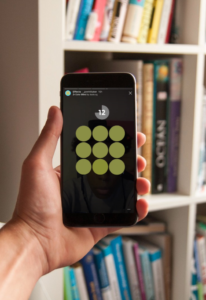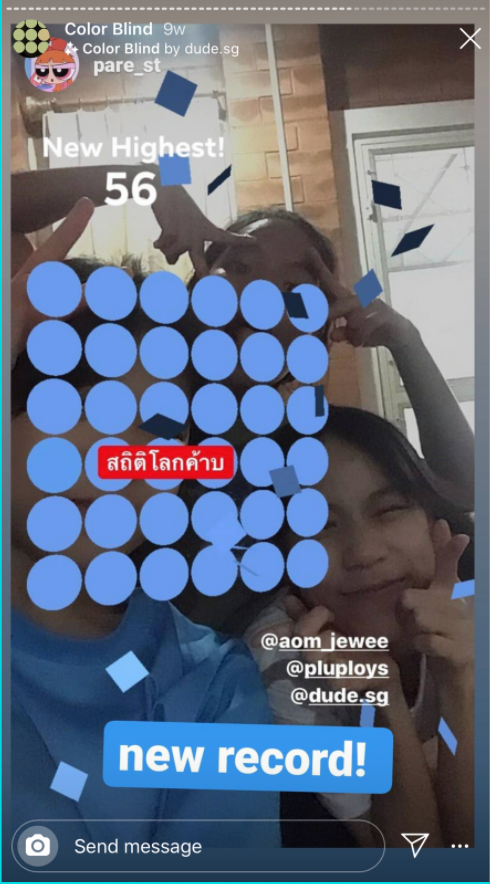How to get millions of views on an Instagram AR filter is a topic that basically any marketer or Spark AR creator should know about. Given the growth of the Spark AR platform with the droves of creators and brands building Instagram filters there are probably over 1 Million AR effects (speculating from private pool of Spark AR veterans) out there.
When we look at our own data from Instagram AR filters, DUDE has launched:
- 50% of the Instagram Filters get below 500,000 impressions
- 20% of them get below 100,000 impressions
- Only 4% ever reach over 500 million impressions

But I’ll let you in on a little secret…
Most Instagram AR creators and Spark AR agencies really just put it all up to luck and kinda suck at marketing their Instagram AR filters. But what they have done, they did and continue to do very well. They have built relationships with people who love filters (i.e. their followers) and have insight on what makes people go wild with filters.
Which is why I’m writing this post.
You are about to learn why people went crazy over DUDE’s Color Blind filter and how you can use these same elements to help your future AR filters get massive impressions too.
Break Down of 7 Psychological Triggers to Increase Usage of AR Filter Game
I’ll start with a little introduction to the Color Blind Game, then we’ll go over the breakdown.
DUDE found inspiration from a Facebook game called Lyto Color Dots that was shared between a group of friends where a player must choose the color that doesn’t match the others in each round. The colors come in all different shades and hues: greens, blues, oranges, reds, yellows.
Fun fact: Red–green color blindness is the most common form, followed by blue–yellow color blindness and total color blindness.
It’s a single player game where you try to get to higher rounds that increase in difficulty. Since this was a Facebook Game app, players scores where published in their public feed and they could challenge their friends.
I got sucked in for a few times, not gonna lie.
This was the inspiration for the Color Blind AR Game, however, it wasn’t an exact copy but an adaption to the original. We see it similar to the Buzzfeed quizzes that were adapted to make the viral “Which Kind of _____ Are You?” filters.
Inspiration – Lyto Color Dots

Filter – Dude.sg Color Blind

In this Instagram AR filter adaption, the Color Blind Game gives people a total of 7 seconds to play each round. Game play starts with 4 options with users trying and increases in difficulty round by round.
#1 Rate of Reinforcement
As mentioned earlier, players get a mere 7 seconds per round. So every 7 seconds they are hopefully getting a positive reinforcement for when they select a correct one. There is an immediate tone, the images and colors of the current round disappears & they move to the next round with more options to choose from.
When someone selects the wrong choice they will lose 1 second. Ohh Dude, does it suck! Now, they only have 6 or less seconds to choose the correct one. For a first time player, this rapid reinforcement is a motivator (or stressor) to choose a correct color with a more immediate action.
So let’s think of this in terms of someone playing for 1 minute. They receive immediate reinforcement either positive or negative during a 60 minute game play will have moved to more than 8 levels during the Color Blind game.
DUDE’s ? for AR Success Tip
When building your own AR game filters on Instagram, think about the rate of reinforcement. Again, it doesn’t always have to be positive reinforcement but as you can see from our learnings the rate should be immediate.
#2 Classic Conditioning
One element of classical conditioning we are used to is hearing the sounds of of a bell to indicate a correct selection. In the Color Blind Game, as the level increases the tone of the sound goes up. The sound going up is a universal cue that we are doing good. This motivates the game player to keep going.
Another element of classical conditioning that people see are the numbers. We have 2 separate types of classical conditioning and visual feedback people receive in this specific game. The first one is the timer counting down, we all know as we see the numbers go down we are on a race against the clock.
The second visual feedback is a positive reinforcement of seeing the numbers of the levels increase. Seeing numbers go up is typically seen as a good thing for people.
DUDE’s ? for AR Success Tip
When building your own AR game filters on Instagram, use visual and auditory cues that we are accustomed to for motivation and signals. Colors, numbers, sizes, animations, tones and dings… use your imagination!
#3 Social Comparison
Competition can motivate those that think they can win. This game was designed from the start to be easy for most color seeing individuals and for color blind individuals to be able to play since the shades from the start were highly noticeable.
DUDE’s ? for AR Success Tip
In future AR games, design not only for the winners but also the losers.
#4 Interacting with others is positively motivating
People loved to share their results to their followers, friends and family as a way to show how good they are without bragging or share bad results to show humility. Sharing results is a great way to start a conversation with your friends.
DUDE’s ? for AR Success Tip
In future AR games, design so that people want to share with their friends and family. Sometimes people really want to have a conversation with their friends and family but don’t know how to open that conversation. Design to be that conversation opener.
#5 Motivate by showing progress over future attempts

Once a person left the game, their score would be stored inside the AR experience. When they opened up the AR experience again it would show their highest score in which to beat.
DUDE’s ? for AR Success Tip
In future AR games, design for repetitive play. This can be done with storing points, levels or any other counting unit.
#6 Cooperative motivation

We found some people formed groups inside Direct Messages and in person with teams set out to beat each other. This was something taken outside of the AR game and spurred creative cooperative motivation for a group to hit a certain goal.
DUDE’s ? for AR Success Tip
In future AR games, you can make multi-player Instagram filter games or find ways for many people to form teams on one account.
#7 Reciprocity
After people shared and tagged other users in a challenge, their friends would play the AR game and also reciprocate by tagging the original person back.
This sort of tagging and mentioning other people inside of the Instagram stories encourages people reward the kind actions.
DUDE’s ? for AR Success Tip
In future AR games, take the lead as an account manager. Share and tag users who play your games!
Conclusion
You now know how to increase your visibility and usage for Instagram filter games.
Understanding the human psychology behind games and social interactions online provides you with the foundation of building the next viral game. These two essential elements are short and sweet enough to be mastered in an afternoon, yet powerful enough to move the needle in your branded augmented reality campaigns.
If you found this article helpful, please share it so we can reach as many people as possible.
